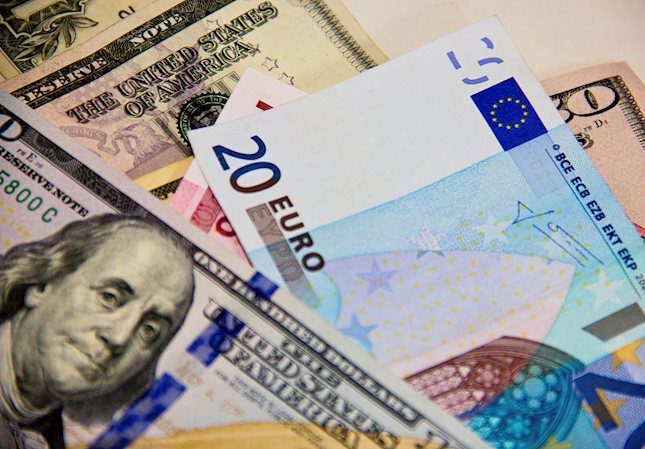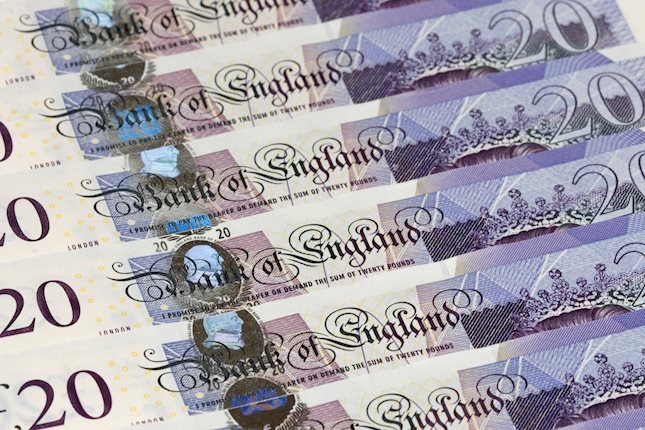- AUD/USD edges higher to near 0.6575 in Monday’s early Asian session.
- The RBA’s hawkish tone and hotter-than-expected Chinese CPI inflation data support the Aussie.
- Rising Middle East geopolitical tensions might cap the pair’s upside.
The AUD/USD pair trades on a stronger note near 0.6575 during the early Asian session on Monday. The hawkish messages from the Reserve Bank of Australia (RBA) and hotter Chinese inflation data provide some support to the Aussie. However, the escalating geopolitical tensions in the Middle East might cap the upside for the pair.
The RBA left the interest rate unchanged at 4.35% for a sixth consecutive meeting last week. RBA governor Michele Bullock noted the upside risks to inflation and will not hesitate to raise rates if it needs to. Westpac analysts forecast the first-rate cut will occur in February 2025 from the previously expected November 2024. The hawkish stance of the Australian Central Bank is likely to underpin the Australian Dollar (AUD) in the near term.
Additionally, China’s Consumer Price Index (CPI) rose by a more-than-expected 0.5% in July from a year ago due to seasonal factors like weather, lifting the AUD. Nonetheless, concerns about sluggish Chinese demand persist and might limit the pair’s upside. Traders will take more cues from Chinese Retail Sales and Industrial Production on Thursday. Also, the Australian employment data will be released.
On the other hand, markets remain convinced the Federal Reserve (Fed) will start easing monetary policy at its upcoming meeting in September. The CME FedWatch Tool showed the possibility of a 50 basis points (bps) interest rate cut by the Fed at the September meeting at 52.5%, down from 57.5% a day ago.
Defence Minister Yoav Gallant informed US Defense Secretary Lloyd Austin on Sunday that Iran's military preparations indicated the country is preparing for a large-scale strike on Israel, according to Axios writer Barak Ravid on X, citing a person familiar with the call. Any signs of rising geopolitical risks might boost safe-haven flows and benefit the Greenback.
Australian Dollar FAQs
One of the most significant factors for the Australian Dollar (AUD) is the level of interest rates set by the Reserve Bank of Australia (RBA). Because Australia is a resource-rich country another key driver is the price of its biggest export, Iron Ore. The health of the Chinese economy, its largest trading partner, is a factor, as well as inflation in Australia, its growth rate and Trade Balance. Market sentiment – whether investors are taking on more risky assets (risk-on) or seeking safe-havens (risk-off) – is also a factor, with risk-on positive for AUD.
The Reserve Bank of Australia (RBA) influences the Australian Dollar (AUD) by setting the level of interest rates that Australian banks can lend to each other. This influences the level of interest rates in the economy as a whole. The main goal of the RBA is to maintain a stable inflation rate of 2-3% by adjusting interest rates up or down. Relatively high interest rates compared to other major central banks support the AUD, and the opposite for relatively low. The RBA can also use quantitative easing and tightening to influence credit conditions, with the former AUD-negative and the latter AUD-positive.
China is Australia’s largest trading partner so the health of the Chinese economy is a major influence on the value of the Australian Dollar (AUD). When the Chinese economy is doing well it purchases more raw materials, goods and services from Australia, lifting demand for the AUD, and pushing up its value. The opposite is the case when the Chinese economy is not growing as fast as expected. Positive or negative surprises in Chinese growth data, therefore, often have a direct impact on the Australian Dollar and its pairs.
Iron Ore is Australia’s largest export, accounting for $118 billion a year according to data from 2021, with China as its primary destination. The price of Iron Ore, therefore, can be a driver of the Australian Dollar. Generally, if the price of Iron Ore rises, AUD also goes up, as aggregate demand for the currency increases. The opposite is the case if the price of Iron Ore falls. Higher Iron Ore prices also tend to result in a greater likelihood of a positive Trade Balance for Australia, which is also positive of the AUD.
The Trade Balance, which is the difference between what a country earns from its exports versus what it pays for its imports, is another factor that can influence the value of the Australian Dollar. If Australia produces highly sought after exports, then its currency will gain in value purely from the surplus demand created from foreign buyers seeking to purchase its exports versus what it spends to purchase imports. Therefore, a positive net Trade Balance strengthens the AUD, with the opposite effect if the Trade Balance is negative.
Information on these pages contains forward-looking statements that involve risks and uncertainties. Markets and instruments profiled on this page are for informational purposes only and should not in any way come across as a recommendation to buy or sell in these assets. You should do your own thorough research before making any investment decisions. FXStreet does not in any way guarantee that this information is free from mistakes, errors, or material misstatements. It also does not guarantee that this information is of a timely nature. Investing in Open Markets involves a great deal of risk, including the loss of all or a portion of your investment, as well as emotional distress. All risks, losses and costs associated with investing, including total loss of principal, are your responsibility. The views and opinions expressed in this article are those of the authors and do not necessarily reflect the official policy or position of FXStreet nor its advertisers. The author will not be held responsible for information that is found at the end of links posted on this page.
If not otherwise explicitly mentioned in the body of the article, at the time of writing, the author has no position in any stock mentioned in this article and no business relationship with any company mentioned. The author has not received compensation for writing this article, other than from FXStreet.
FXStreet and the author do not provide personalized recommendations. The author makes no representations as to the accuracy, completeness, or suitability of this information. FXStreet and the author will not be liable for any errors, omissions or any losses, injuries or damages arising from this information and its display or use. Errors and omissions excepted.
The author and FXStreet are not registered investment advisors and nothing in this article is intended to be investment advice.
Recommended content
Editors’ Picks

EUR/USD climbs above 1.0400 on broad USD weakness
EUR/USD gathers bullish momentum and trades above 1.0400 on Monday. The US Dollar remains under heavy selling pressure and helps the pair push higher as risk mood improves on news of US President-elect Donald Trump considering tariffs that would only cover critical imports.

GBP/USD surges above 1.2500 as risk flows dominate
GBP/USD extends its recovery from the multi-month low it set in the previous week and trades above 1.2500. The improving risk mood on easing concerns over Trump tariffs fuelling inflation makes it difficult for the US Dollar (USD) to find demand and allows the pair to stretch higher.

Gold rises toward $2,650 as US yields edge lower
Gold regains its traction and rises to the $2,650 area after dropping toward $2,620 earlier in the day. The benchmark 10-year US Treasury bond yield stays in the red below 4.6% heading into the American session, helping XAU/USD hold its ground.

Five fundamentals for the week: Nonfarm Payrolls to keep traders on edge in first full week of 2025 Premium
Did the US economy enjoy a strong finish to 2024? That is the question in the first full week of trading in 2025. The all-important Nonfarm Payrolls (NFP) stand out, but a look at the Federal Reserve (Fed) and the Chinese economy is also of interest.

The week ahead: Three things to watch
Analysts believe that American exceptionalism will persist in 2025, and the first trading week of the year would suggest that investors are also betting on another strong year for the US.

Best Forex Brokers with Low Spreads
VERIFIED Low spreads are crucial for reducing trading costs. Explore top Forex brokers offering competitive spreads and high leverage. Compare options for EUR/USD, GBP/USD, USD/JPY, and Gold.